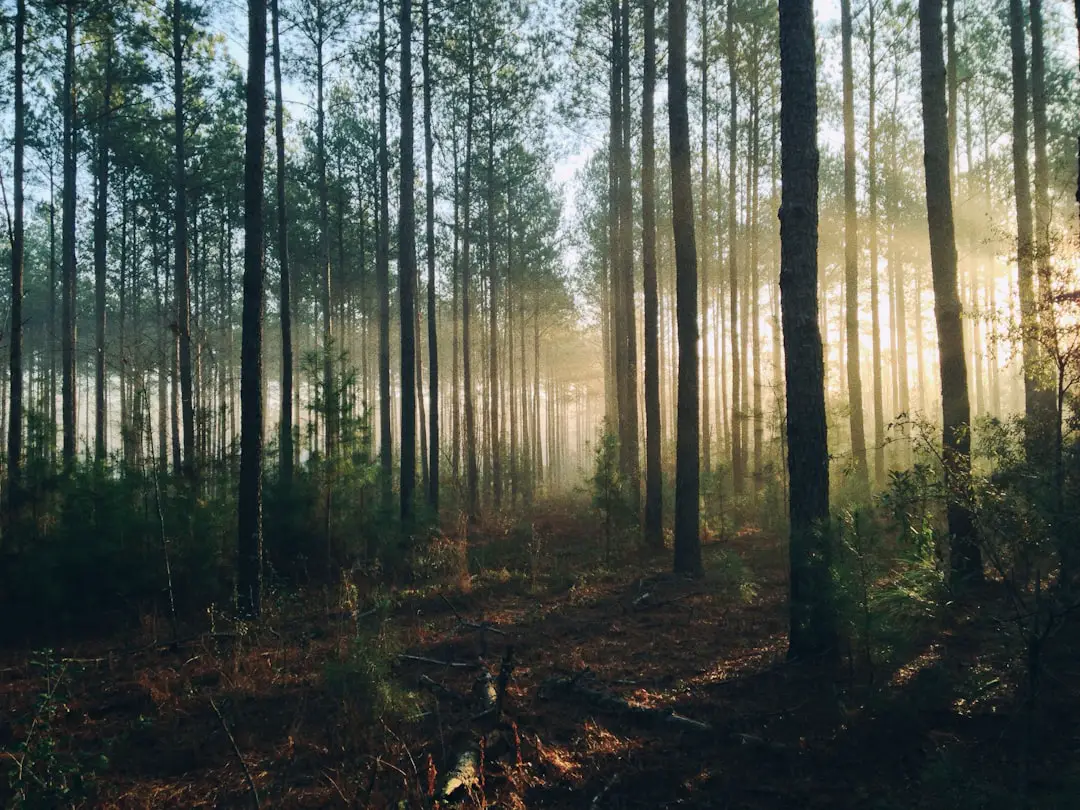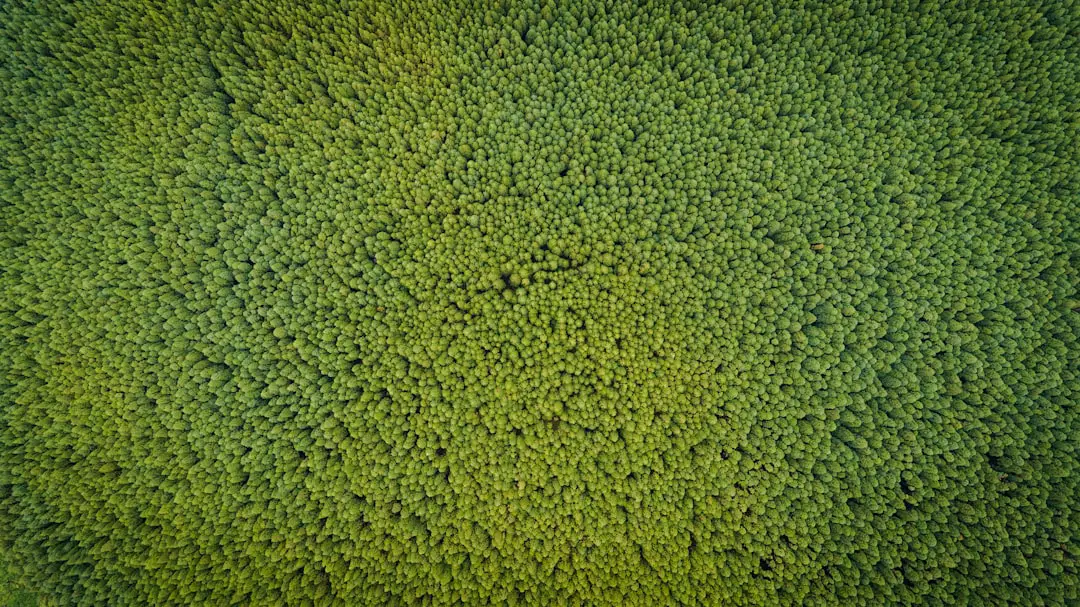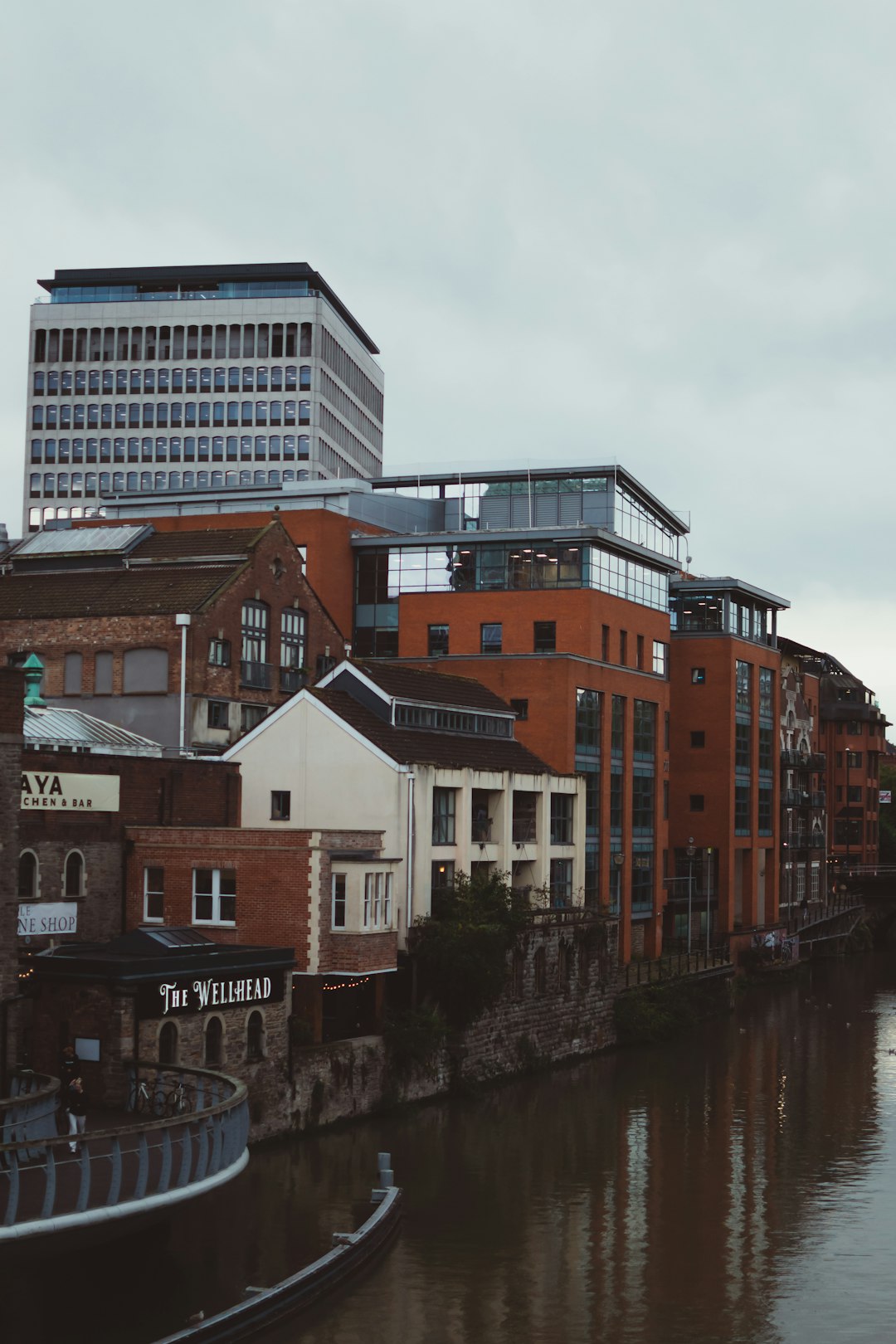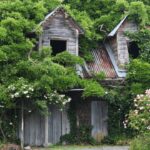Support our educational content for free when you purchase through links on our site. Learn more

Have you ever gazed up at a skyscraper adorned with lush greenery and wondered if it truly lives up to the hype? Vertical forests are often hailed as the future of urban living, promising to transform concrete jungles into vibrant ecosystems. But before you jump on the vertical bandwagon, it’s essential to peel back the layers and explore the disadvantages lurking beneath that beautiful facade.
Imagine walking through a city where buildings breathe life into the environment, yet behind the scenes, the costs and challenges of maintaining such marvels can be staggering. Did you know that the first vertical forest in Milan houses over 9,000 plants? While that sounds impressive, it also translates to a hefty maintenance bill! In this article, we’ll unravel the complexities of vertical forests, revealing 10 critical disadvantages that every urban planner and eco-enthusiast should consider.
Key Takeaways
- High Initial Investment: Vertical forests require significant upfront costs due to their complex design and materials.
- Ongoing Maintenance: Keeping these green giants healthy demands continuous investment in maintenance and specialized care.
- Water Consumption Concerns: Despite innovative systems, maintaining lush vegetation can lead to increased water usage.
- Limited Crop Variety: Not all plants thrive in vertical settings, restricting potential urban farming opportunities.
- Public Perception: Mixed community reception can impact the success and sustainability of vertical forest projects.
If you’re intrigued by the possibilities of vertical forests but want to tread carefully, consider exploring sustainable gardening options that are easier to implement. Shop Vertical Garden Kits or Sustainable Gardening Tools to start your journey toward a greener lifestyle! 🌱
Table of Contents
- Quick Tips and Facts about Vertical Forests 🌳
- Understanding Vertical Forests: A Green Revolution 🌍
- Top 10 Disadvantages of Vertical Forests 🚫
- Environmental Impacts: The Good, the Bad, and the Ugly 🌱
- Economic Considerations: Costs vs. Benefits 💰
- Maintenance Challenges: Keeping It Green 🌿
- Architectural Limitations: Designing Vertical Forests 🏙️
- Community Perspectives: Public Reception and Criticism 🗣️
- Comparative Analysis: Vertical Forests vs. Traditional Green Spaces 🌳 vs. 🌲
- Future of Vertical Forests: Trends and Innovations 🔮
- Conclusion: Weighing the Pros and Cons ⚖️
- Recommended Links for Further Reading 📚
- FAQ: Your Questions Answered ❓
- Reference Links: Credible Sources for More Insights 🔗
Quick Tips and Facts about Vertical Forests 🌳
- Vertical forests are buildings with integrated plant life, aiming to bring nature into urban areas. Think of them as skyscrapers with a serious green thumb! 🌿
- They’re designed to improve air quality, reduce energy consumption, and boost biodiversity. Vertical Forests: The Advantages and Disadvantages 2024 🌳
- However, they also come with challenges like high construction and maintenance costs, potential water usage concerns, and limitations in terms of suitable locations.
- Did you know? The first vertical forest was built in Milan, Italy, and it houses over 900 trees! 🇮🇹
Understanding Vertical Forests: A Green Revolution 🌍
What is a Vertical Forest?
Imagine a world where buildings breathe life into concrete jungles. That’s the vision behind vertical forests. These architectural marvels incorporate trees, plants, and shrubs into their design, creating a symbiotic relationship between nature and urban living. They’re like giant vertical gardens, but with a much grander scale and ambition!
The Rise of Urban Greenery
As cities grow and populations soar, the need for sustainable solutions becomes increasingly critical. Vertical forests offer a unique approach to tackling urban challenges like air pollution, the urban heat island effect, and the loss of green spaces.
More Than Just a Pretty Facade
While the aesthetic appeal of vertical forests is undeniable, their benefits extend far beyond visual enhancements. They act as mini ecosystems, filtering pollutants from the air, providing shade and insulation, and creating habitats for birds and insects.
Top 10 Disadvantages of Vertical Forests 🚫
While the concept of vertical forests is captivating, it’s essential to acknowledge the potential drawbacks before embracing them as the ultimate solution for sustainable urban development. Here are ten disadvantages to consider:
- High Initial Investment: Building a vertical forest is not for the faint of heart—or the light of wallet! The initial construction costs can be significantly higher than conventional buildings due to the complex engineering and specialized materials required.
- Ongoing Maintenance Costs: Keeping a vertical forest thriving requires a dedicated team of arborists, horticulturalists, and maintenance personnel. Regular pruning, irrigation, fertilization, and pest control can put a strain on budgets.
- Water Consumption: While some vertical forests incorporate rainwater harvesting and greywater systems, maintaining the lush vegetation can still require substantial amounts of water, especially in arid climates.
- Limited Crop Variety (for Urban Farming): If the goal is to incorporate urban farming, vertical forests may not be suitable for all types of crops. Root vegetables and larger fruit trees, for example, may not thrive in the confined spaces.
- Potential for Pest Infestations: The dense vegetation in vertical forests can attract insects and pests, requiring careful monitoring and integrated pest management strategies.
- Risk of Plant Diseases: The close proximity of plants in a vertical forest can increase the risk of diseases spreading rapidly, potentially leading to significant plant loss if not managed proactively.
- Structural Challenges: Integrating trees into a building’s structure requires careful planning and engineering to ensure the building’s stability and longevity.
- Limited Sunlight Penetration: Depending on the building’s design and orientation, some parts of a vertical forest may receive limited sunlight, potentially affecting plant growth and overall biodiversity.
- Accessibility for Maintenance: Accessing all areas of a vertical forest for maintenance can be challenging, often requiring specialized equipment and trained personnel.
- Public Perception and Acceptance: While many people find vertical forests aesthetically pleasing, some may have concerns about potential allergens, insects, or the overall practicality of the concept.
Environmental Impacts: The Good, the Bad, and the Ugly 🌱
The Good: A Breath of Fresh Air
Vertical forests are often lauded for their potential to improve air quality in polluted urban environments. The plants act as natural air purifiers, absorbing carbon dioxide and releasing oxygen through photosynthesis. They also help trap particulate matter, reducing smog and improving respiratory health.
The Bad: The Carbon Footprint of Construction
While the long-term environmental benefits of vertical forests are undeniable, it’s crucial to consider the carbon footprint associated with their construction. The production of materials like steel, concrete, and glass can release significant amounts of greenhouse gases into the atmosphere.
The Ugly: The Potential for Greenwashing
Some critics argue that vertical forests can be used as a form of “greenwashing,” where developers promote the environmental benefits while overlooking the potential drawbacks or failing to implement truly sustainable practices throughout the building’s lifecycle.
Economic Considerations: Costs vs. Benefits 💰
The Price Tag of Sustainability
Building and maintaining a vertical forest comes with a hefty price tag. The initial construction costs, specialized materials, and ongoing maintenance expenses can be substantial. However, it’s essential to consider the potential long-term economic benefits.
Energy Savings and Increased Property Values
Vertical forests can contribute to energy savings by providing natural insulation, reducing the need for artificial heating and cooling. The presence of greenery can also increase property values, making them attractive investments.
The Importance of Life Cycle Cost Analysis
To fully understand the economic viability of vertical forests, it’s crucial to conduct a comprehensive life cycle cost analysis. This involves considering all costs and benefits over the building’s lifespan, including construction, operation, maintenance, and eventual demolition or repurposing.
Maintenance Challenges: Keeping It Green 🌿
A Symphony of Horticulture and Engineering
Maintaining a vertical forest is no walk in the park! It requires a delicate balance of horticultural expertise and specialized equipment. Regular irrigation, fertilization, pruning, and pest control are essential to keep the plants healthy and thriving.
The Importance of Accessibility and Safety
Accessing all areas of a vertical forest for maintenance can be challenging and potentially hazardous. Building owners need to ensure that safe and efficient access points are incorporated into the design, along with appropriate safety measures for maintenance personnel.
The Role of Technology in Vertical Forest Maintenance
Technology is playing an increasingly important role in vertical forest maintenance. Automated irrigation systems, sensors for monitoring plant health, and even drones for aerial inspections are making it easier to care for these complex ecosystems.
Architectural Limitations: Designing Vertical Forests 🏙️
Finding the Right Site
Not every location is suitable for a vertical forest. Factors like climate, sunlight exposure, wind patterns, and access to water need to be carefully considered during the site selection process.
Structural Considerations: Building for Trees
Integrating trees into a building’s structure requires innovative engineering and design solutions. The weight of the soil, plants, and water needs to be factored in, along with the potential for root growth and movement.
Balancing Aesthetics with Functionality
While the visual appeal of vertical forests is undeniable, it’s essential to balance aesthetics with functionality. The design should not only accommodate the plants’ needs but also ensure the building’s safety, accessibility, and overall livability.
Community Perspectives: Public Reception and Criticism 🗣️
A Green Oasis or a Concrete Jungle?
Public opinion on vertical forests is mixed. Some people embrace them as innovative solutions for urban greening, while others view them as impractical, expensive, or even aesthetically unpleasing.
Addressing Concerns about Biodiversity and Equity
Critics argue that vertical forests may not provide the same level of biodiversity support as natural forests. There are also concerns about equity, as these luxurious developments may only be accessible to affluent residents.
The Importance of Community Engagement
Engaging the community in the planning and design of vertical forests is crucial to address concerns, gather feedback, and foster a sense of ownership and stewardship.
Comparative Analysis: Vertical Forests vs. Traditional Green Spaces 🌳 vs. 🌲
Urban Greening: A Multifaceted Approach
Vertical forests should be viewed as one of many tools in the urban greening toolbox. They offer unique benefits but also come with limitations that make traditional green spaces, such as parks, gardens, and green roofs, essential complements.
Biodiversity and Ecosystem Services
While vertical forests can contribute to urban biodiversity, they may not provide the same level of habitat complexity and ecological connectivity as larger, more established green spaces.
Accessibility and Social Equity
Traditional green spaces are often more accessible to the public and can provide a wider range of recreational and social benefits, promoting community cohesion and well-being.
Future of Vertical Forests: Trends and Innovations 🔮
The Evolution of Vertical Forests
As technology advances and our understanding of urban ecosystems grows, we can expect to see even more innovative and sustainable vertical forest designs in the future.
Integrating Smart Technology
The integration of smart technology, such as sensors for monitoring plant health, automated irrigation systems, and renewable energy sources, will be key to optimizing the performance and sustainability of vertical forests.
Biophilic Design and Human Well-Being
The principles of biophilic design, which focuses on incorporating natural elements into the built environment, will continue to shape the evolution of vertical forests, creating spaces that promote human health, well-being, and connection to nature.
Conclusion: Weighing the Pros and Cons ⚖️

Vertical forests present a fascinating solution to urban challenges, intertwining nature with architecture in a way that’s both innovative and visually stunning. 🌆 On one hand, they offer improved air quality, energy savings, and enhanced biodiversity. On the other hand, they face significant hurdles, including high construction and maintenance costs, water consumption concerns, and limited applicability in certain environments.
So, should you jump on the vertical forest bandwagon? If you’re in an urban setting with a commitment to sustainability, they can be a transformative addition to your community! However, it’s crucial to weigh the costs and challenges against the potential benefits.
In essence, while vertical forests are not a one-size-fits-all solution, they hold promise as part of a broader strategy for creating greener, healthier cities. 🌱
Recommended Links for Further Reading 📚
- Vertical Forests: Shop Vertical Forest Books on Amazon
- Sustainable Architecture: Explore Sustainable Design Resources
- Gardening for Beginners: Gardening for Beginners Guide
FAQ: Your Questions Answered ❓

What are the disadvantages of vertical farming?
High Initial Investment and Energy Use
Vertical farming requires substantial upfront investment in infrastructure and technology. The reliance on artificial lighting and climate control leads to high energy consumption, raising operational costs. Additionally, the technical expertise required to operate these systems can be a barrier for many potential farmers.
What are the disadvantages of vertical programs?
Limited Community Engagement and Accessibility
Vertical programs can sometimes lack community involvement, leading to a disconnect between the projects and the local population. Furthermore, the high costs associated with vertical programs may limit accessibility, making it challenging for lower-income communities to benefit from these initiatives.
Are vertical forests expensive?
Yes, They Can Be!
Vertical forests typically come with a high price tag due to the complexities involved in their design and construction. The ongoing maintenance costs can also be significant, especially if a dedicated team is required to keep the plants healthy and thriving.
Read more about “Vertical Forests: The Advantages and Disadvantages … 🌳”
What are the disadvantages of deforestation?
Environmental and Ecological Impact
Deforestation leads to habitat destruction, loss of biodiversity, and increased carbon dioxide levels in the atmosphere. It disrupts the water cycle, contributes to soil erosion, and can lead to climate change. The loss of trees also means the loss of natural barriers against flooding and wildfires. For more detailed insights, check out BYJU’S on the Disadvantages of Cutting Trees.
Reference Links: Credible Sources for More Insights 🔗
- Surface Reporter: Sustainable Approach to Vertical Forests
- APX Construction Group: Vertical Farming Pros and Cons
- BYJU’S: Disadvantages of Cutting Trees
With all this information in hand, we hope you’re feeling empowered to explore the world of vertical forests. They may not be perfect, but they certainly offer a glimpse into a greener future! 🌳✨

